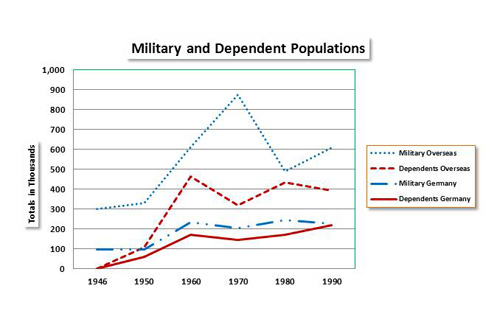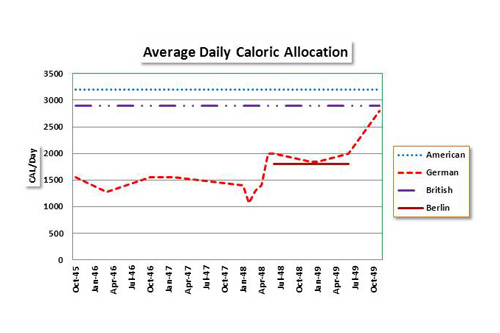Annotated Project Charts
The charts below are compilations of data from a variety of sources as shown.
Notes for Chart 1 (above), Military and Dependent Populations, 1945-1990:
1. Data collected from Heritage Foundation, Center of Military History, Office of the Secretary of Defense-Defense Manpower Center (OSD-DMDC), the U.S. Census Bureau, and Stars and Stripes newspaper (European Edition).
2. The statistical increase of "Military Overseas" for the years 1965-1970 reflects the large deployment of unaccompanied service personnel to Southeast Asia. The drop in "Dependents Overseas" during that period reflects those corresponding families remaining in CONUS (Continental United States).
Notes for Chart 2 (above), Average Daily Caloric Allocation, October 1945-November 1949:
1. Data collected from various sources including the New York Times, Stars and Stripes newspaper (European edition), Detlef Junker, ed., The United States and Germany in the Era of the Cold War, 1945-1990: A Handbook, Volume I: 1945-1968, and Richard Reeves, Daring young Men: The Heroism and Triumph of the Berlin Airlift, June 1948-1949.
2. Legend entry "Berlin" refers to the period of the Berlin Blockade, June 1948-May 1949, and applies only to Germans residents of that city.





